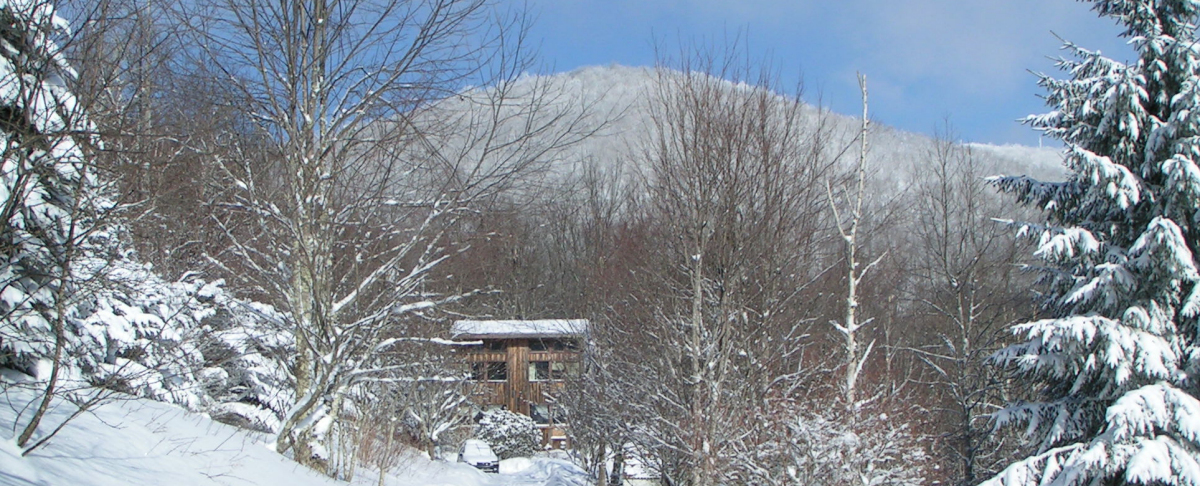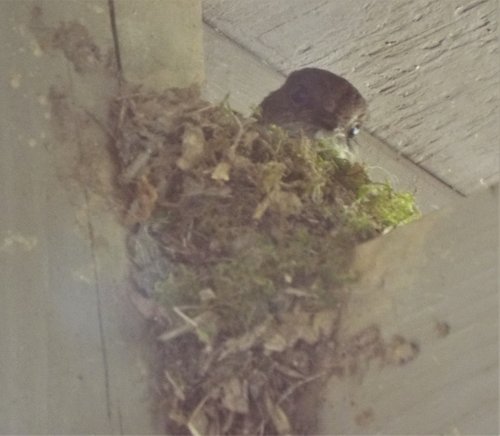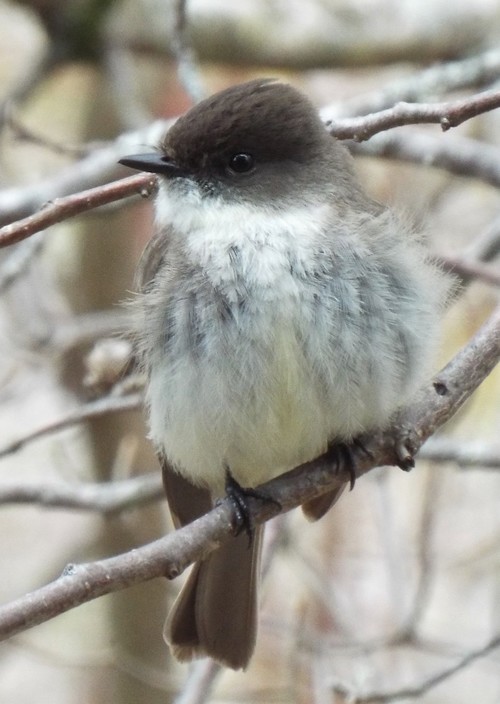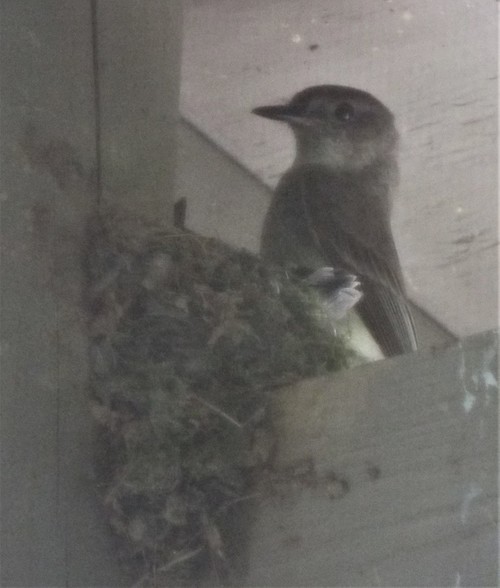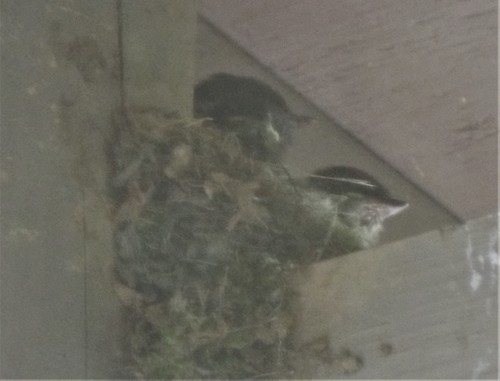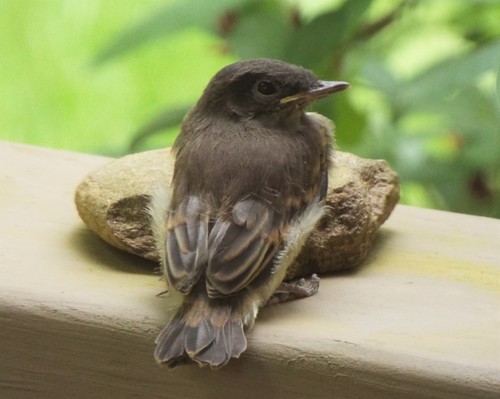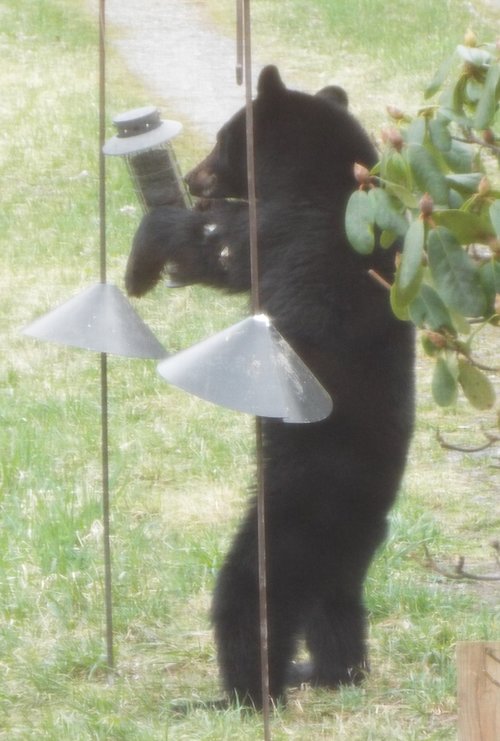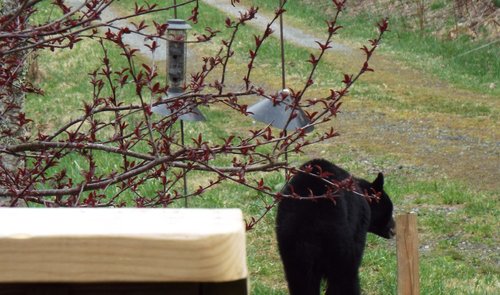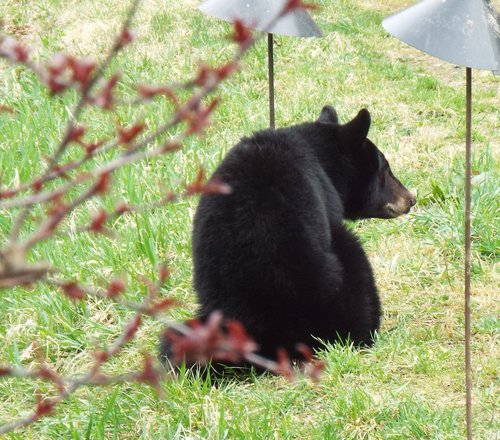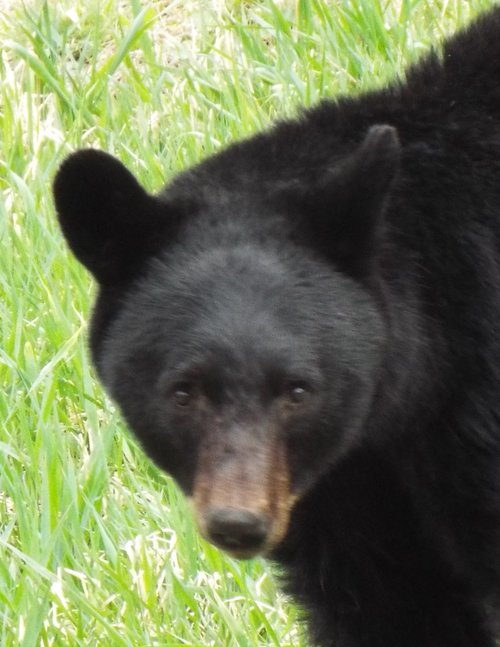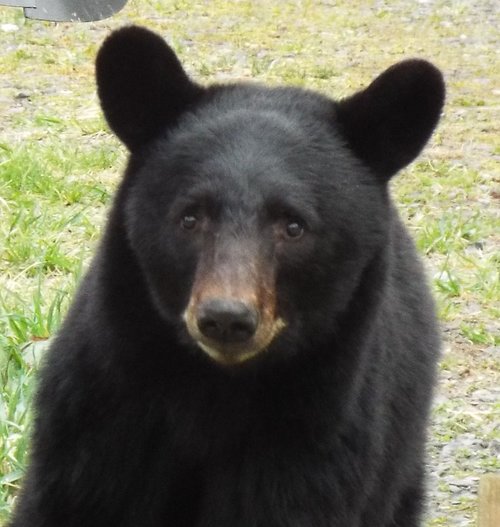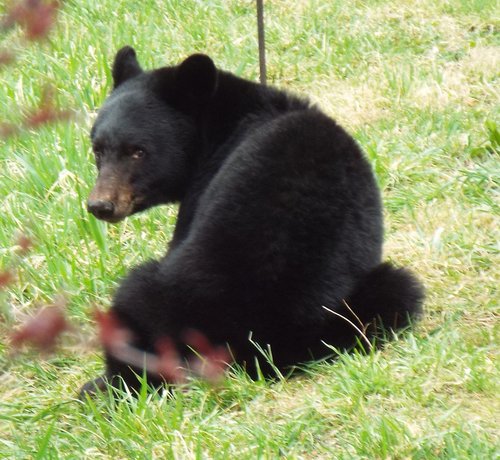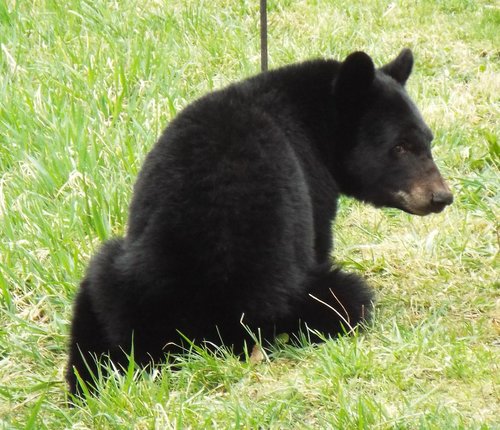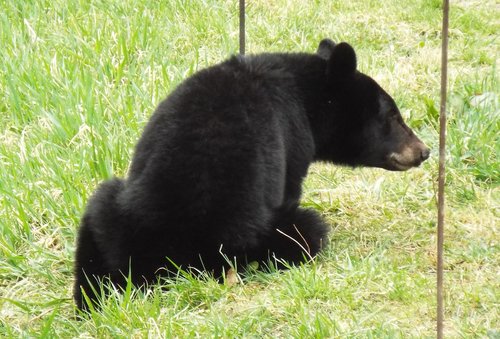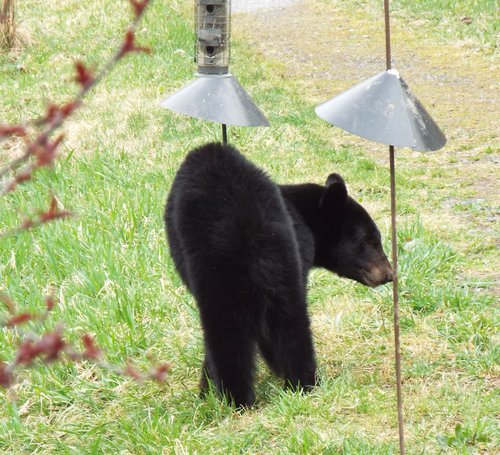Last month I wrote about the nesting activity of the phoebes and the wrens around our house. Since then there has been a virtual explosion of bird nurseries, so I thought it appropriate to provide an update on some of the bird and animal happenings during the interim.
After the phoebes’ first brood had flown the nest, the adults did take a brief break. Both the adults and the young phoebes stayed around our area, but they didn’t come back to the nest at all. The adults finally did start working on the nest some more, so we thought they were probably preparing for a second brood. They seemed to be doing some cleaning and repair work and even built up one side of the nest a bit higher. Occasionally one of the birds would sit in the nest for a while. However, after a few days they stopped hanging around the nest. We still see them nearby, but they have apparently decided that raising one family was enough for this year.
Meanwhile on the other side of the house the wrens have been busy for weeks, working and singing. At first we couldn’t tell for sure what they were doing since it appeared that they might have been working on nests in the hidden spaces at both ends of the deck roof. Plus they were making frequent trips into a nearby brush pile; could they possibly have been building a third nest?
We finally decided the wrens must have settled on one of the nest sites, because we observed them going in and out of that one quite a bit. After a couple of weeks we saw them carrying food into the nest area, a sure sign that eggs had hatched.Then a week or so ago we saw a couple of young wrens coming out of the nest area, being fed by the adults, and then hanging around begging to be fed more. The strange thing is that we have continued to see the adults carrying food into the nest site; obviously there are still baby wrens in the nest. Had there been two broods in quick succession? We don’t know. We can hear little cheeps now coming from the nest when the adults bring food, so I guess before long some more young ones will be emerging. We should have a sizable colony of wrens for the rest of the summer. That’s just fine, since you can’t ever have too many wrens with that lovely song of theirs.
On the side of the house opposite from all of the wren activity we had placed a hanging basket of fuchsias about five feet from the phoebe nest. After being away from home for several days the plants were quite dry. When Carole took the basket down for watering, she discovered a neat little nest had been inserted into the center of the fuchsias. In the center of the nest was a single egg. Apparently, while we had been away, a pair of birds had decided that was the perfect spot for their new home. We hadn’t seen any activity around the nest site, but I was really surprised when I got up on a step stool a day or two later to water the flowers and was greeted by an equally startled mother junco. In the nest by then were two small eggs, followed on subsequent days by a third and a fourth egg.
The next several weeks were exciting for both people and birds. We couldn’t avoid disturbing the juncos at least occasionally since the nest was located just about three feet from the door we had to use anytime we were going to town, but we used the door onto the deck whenever possible. The male junco sat in the witch hazel plant a few feet from the nest to raise an alarm anytime we came near the door or were outside in sight of the nest. If we came too close, both juncos scolded us with their constant chit, chit, chit sounds. When we looked out the screen door to check on the birds, one of the juncos would fly frantically from the nest to the door to the porch railing to the tree and back to the nest. One day as I was making more noise than usual at the sink while washing dishes (the kitchen window is only about ten feet from the nest’s location), the male junco came and sat on the window sill and fussed at me. And then suddenly one day they were gone. The nest was empty. The whole family had slipped away quietly without even letting us know.
The phoebes, the wrens, and the juncos are the birds we have been able to observe most closely during these past few weeks, but we know they are just a small part of all that’s happening. We also have seen catbirds carrying food into an area near the garden where we feel sure they have nested before and into spots closer to the house. Cedar waxwings are not common around our house except when migrating, but I did see a pair gathering nesting materials from a tree by our deck. A turkey and several very small chicks (poults) strolled down our drive and into the meadow a few days ago. A female cardinal perched in the front yard recently holding a very long stem of grass before flying off into the woods, presumably for some nest-building activities of her own. Every drive into town reveals many groups of recently-hatched birds of every variety, testing their wings and exploring their new world. If all the nesting we’ve seen is indicative of what’s going on with the rest of our mountainside bird population, we should have plenty of new residents around us by the end of the summer.
After our visit from the bear earlier this spring, we decided we should not be putting out bird feeders or otherwise feeding all the creatures who share this place with us. That was a difficult decision since we’ve been providing food for many of them for a long time. Over the years we’ve provided black-oil sunflower seed and/or corn, intended primarily for the birds, but also consumed in varying degrees (and frequently in very large amounts) by red and gray squirrels, rabbits, deer, possums, skunks, and especially raccoons. We do very much enjoy having them close around so we can observe their activities. But we also realize it’s not good for them to become overly dependent on having people supply food for them; they need to be able to forage for themselves within their natural environment.
But about a month ago one rather skinny raccoon (we believe she’s a young mother) started coming around each afternoon, seemingly thinking she might find some food on our deck. We believe she was probably one of the baby raccoons who had been brought to our deck in previous years to learn about one of the good local food sources. Seeing how thin she was and recognizing that she was probably providing sustenance to several little mouths back home, we thought she needed to be an exception to our no-food rule. We did a little research, got some nutritious dog food suggested by several sources, and began putting some out for her on a random basis to supplement her natural food gathering activities. She generally comes up to the house in mid to late afternoon. If we haven’t put any food out yet, she retreats to a nearby spot and waits for us to put something in a pan on the deck or in the yard. When she has finished eating, she usually comes up on our deck and looks in at us through the glass doors, seemingly wondering whether there might be more. Then she heads off on her own to search elsewhere.
Last week Mama Raccoon honored us by bringing her three babies to visit with us. They are still extremely skittish, spending most of their brief excursion hiding among the ferns, chirring to each other or to Mama, and running out quickly to grab a few morsels of food. Thus they have continued a long tradition of young mother raccoons introducing their young ones to our place here on the mountain and showing off the next generation to the folks who now live here. It’s a tradition we’re delighted to share with all these very special neighbors of ours.
Here are a few pictures of our newest visitors.
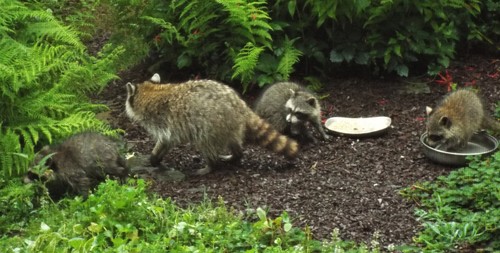
Mama raccoon and her three babies
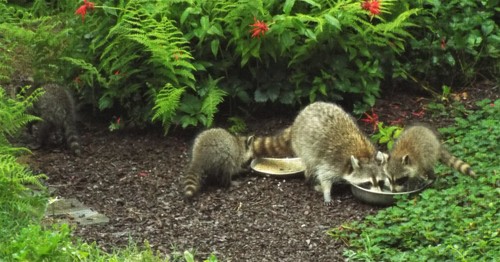
Mama and two babies eating, one going to hide
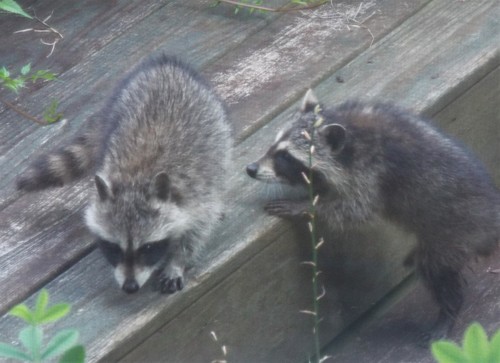
Two baby raccoons exploring the deck
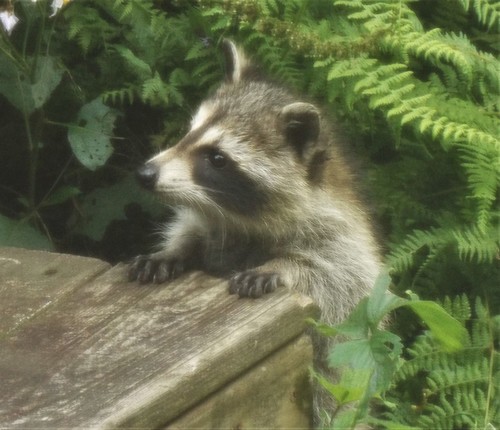
So adorable!
